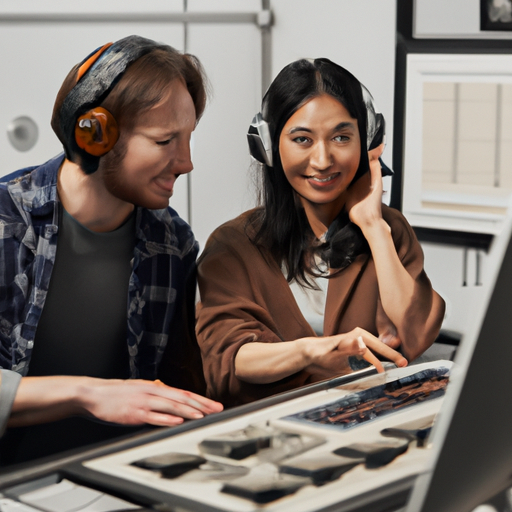How to Choose Dubbing Audio Software Specifically for Spot Editing
Introduction
In the realm of audio production, dubbing audio software plays a crucial role in enhancing the quality and clarity of soundtracks. Dubbing involves replacing or adding audio to a video, ensuring that the final product resonates with the intended audience. Spot editing, a specific aspect of dubbing, focuses on making precise adjustments to audio segments, allowing for seamless integration of sound effects, voiceovers, and music. This article aims to guide you through the process of selecting the right dubbing audio software tailored for spot editing, ensuring that your audio production meets professional standards.
1. Understanding Spot Editing
Spot editing refers to the meticulous process of editing specific segments of audio to achieve the desired sound quality and synchronization with visual elements. This technique is particularly vital in various scenarios, including film production, video game development, and podcast creation. For instance, in film, spot editing may involve adjusting dialogue to match the lip movements of actors or enhancing sound effects to create a more immersive experience. In podcasts, it can mean cutting out unwanted pauses or background noise to maintain listener engagement. Understanding the significance of spot editing is essential for anyone involved in audio production, as it directly impacts the overall quality of the final product.
2. Key Features to Look for in Dubbing Audio Software
When selecting dubbing audio software for spot editing, several key features should be prioritized:
User Interface and Usability
An intuitive user interface is paramount for efficient editing. Look for software that offers a clean layout and easy navigation, allowing you to focus on your creative process rather than struggling with complex menus. Customization options can further enhance workflow efficiency, enabling you to tailor the interface to your specific needs.
Audio Editing Tools
Essential audio editing tools are crucial for spot editing. Look for software that provides cutting, trimming, and fading capabilities. Advanced features such as noise reduction and pitch correction can also be beneficial, allowing you to refine audio quality and ensure that every element fits seamlessly into the overall production.
Multi-Track Editing Capabilities
Handling multiple audio tracks is often necessary in dubbing projects. Choose software that supports multi-track editing, enabling you to layer voiceovers, sound effects, and music tracks effectively. Synchronization features are also vital, ensuring that all audio elements align perfectly with the visual components.
Real-Time Monitoring
Real-time audio monitoring allows you to hear changes as you make them, providing immediate feedback on your edits. This feature is essential for achieving precise adjustments. Additionally, consider latency issues; software with low latency will ensure that your edits are reflected in real-time without noticeable delays.
File Format Support
Compatibility with various audio file formats is crucial for seamless integration with other software and tools. Ensure that the dubbing audio software you choose supports common formats such as WAV, MP3, and AIFF, allowing for flexibility in your audio projects.
3. Performance and Stability
System Requirements
Before committing to any dubbing audio software, check the system requirements. Understanding the minimum and recommended specifications will help you avoid performance issues. Software that demands high processing power may not perform well on older systems, leading to frustrating editing experiences.
Stability and Reliability
Stability is a critical factor, especially during long editing sessions. Look for software with a reputation for reliability, as crashes or glitches can disrupt your workflow. User reviews and feedback can provide valuable insights into the performance of different software options.
4. Integration with Other Tools
Compatibility with DAWs (Digital Audio Workstations)
Seamless integration with other audio production tools is essential for a smooth workflow. Ensure that the dubbing audio software you choose is compatible with popular DAWs, allowing you to incorporate it into your existing setup without hassle.
Plugins and Extensions
The availability of third-party plugins can significantly enhance the functionality of your dubbing audio software. Look for software that supports a wide range of plugins, enabling you to expand your editing capabilities as needed.
Collaboration Features
In collaborative projects, tools for team collaboration and feedback are invaluable. Choose software that offers features for sharing projects, leaving comments, and tracking changes, facilitating effective communication among team members.
5. Budget Considerations
Pricing Models
Dubbing audio software comes in various pricing models, including one-time purchases and subscription-based options. Consider your budget and how often you plan to use the software when making your decision.
Free vs. Paid Software
While free software options may be appealing, they often come with limitations in features and support. Evaluate the pros and cons of free software against paid options to determine which best meets your needs.
Value for Money
Assessing features against cost is crucial for ensuring you get the best value for your investment. Consider what features are essential for your dubbing projects and choose software that offers those capabilities at a reasonable price.
6. User Support and Community
Customer Support Options
Reliable customer support can make a significant difference in your experience with dubbing audio software. Look for options that provide technical support, tutorials, and resources to help you troubleshoot issues as they arise.
User Community and Forums
An active user community can be a valuable resource for tips, tricks, and troubleshooting. Engaging with forums and online communities can enhance your learning experience and provide insights from other professionals in the industry.
7. Trial Versions and Demos
Importance of Testing Software
Before making a purchase, testing software through trial versions is essential. This allows you to explore the features and functionality firsthand, ensuring that the software meets your specific needs.
What to Look for in a Trial
During the trial period, focus on key features such as user interface, audio editing tools, and multi-track capabilities. Assess how well the software integrates with your existing tools and whether it meets your performance expectations.
8. Case Studies and Recommendations
Examples of Popular Dubbing Audio Software
Several dubbing audio software options are popular among professionals in the industry. Adobe Audition, for instance, is known for its robust editing tools and multi-track capabilities, making it a favorite for film and podcast production. Audacity, a free option, offers essential editing features and is widely used by beginners. Reaper is another versatile choice, known for its affordability and extensive customization options.
User Experiences and Testimonials
Insights from professionals can provide valuable guidance in your decision-making process. Look for testimonials and case studies that highlight user experiences with different software options, helping you understand the strengths and weaknesses of each.
Conclusion
Choosing the right dubbing audio software for spot editing is a critical step in achieving high-quality audio production. By understanding the importance of spot editing, identifying key features, and considering performance, budget, and support options, you can make an informed decision that aligns with your specific needs. Take the time to assess your requirements, explore trial versions, and engage with user communities to ensure that you select the best tools for your audio production endeavors. The right dubbing audio software can significantly enhance your workflow and contribute to the success of your projects.
References
- [Dubbing Audio Software Reviews](https://www.example.com)
- [Spot Editing Techniques](https://www.example.com)
- [Audio Production Resources](https://www.example.com)
By following this guide, you can navigate the landscape of dubbing audio software with confidence, ensuring that your audio projects are polished and professional.






